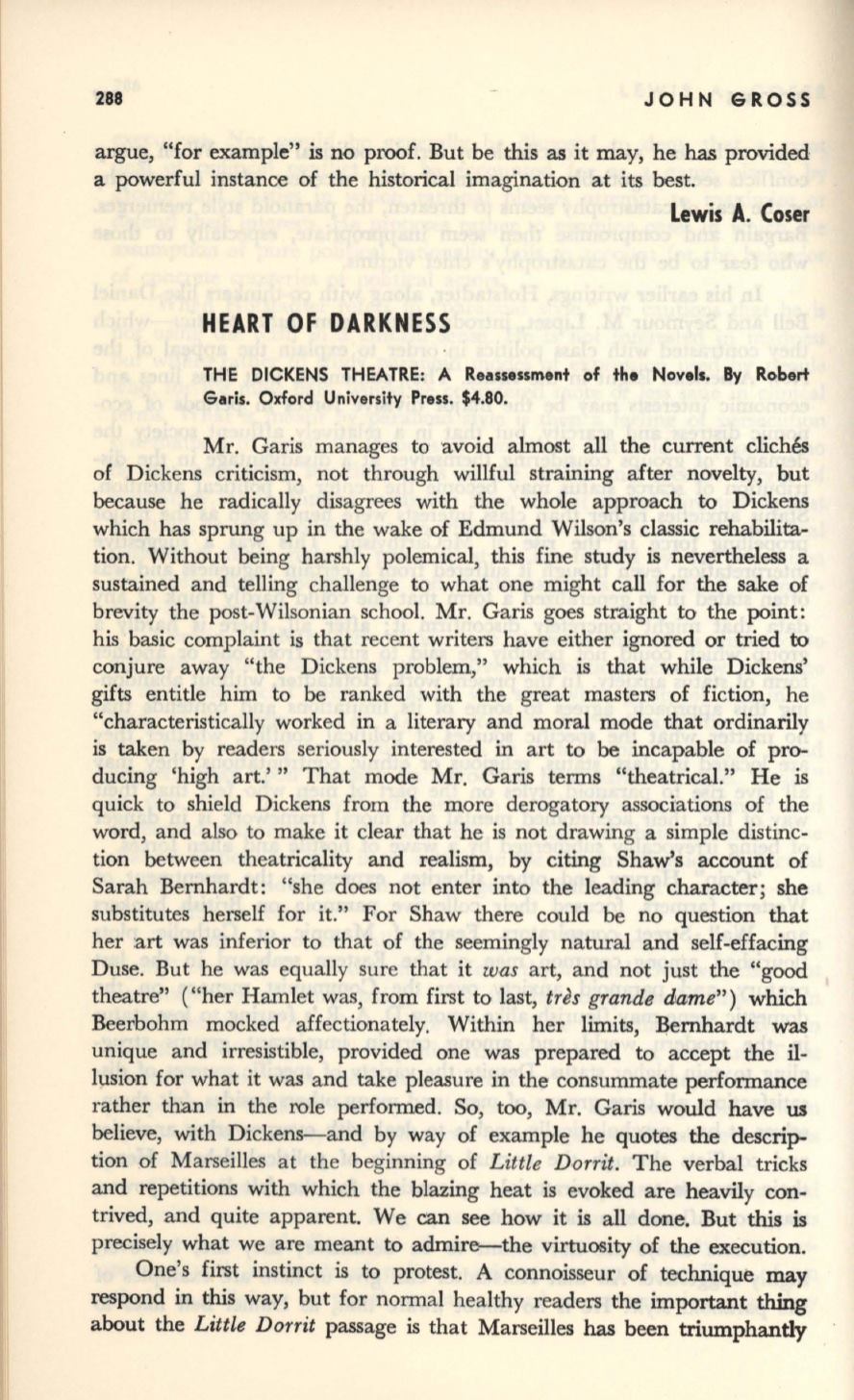
288
JOHN GROSS
argue, "for example"
is
no proof. But be this as it may, he
has
provided
a powerful instance of the historical imagination at its best.
Lewis A. Coser
HEART OF DARKNESS
THE DICKENS THEATRE: A Reassessment of the Novels.
By
Robert
Garis. Oxford University Press. $4.80.
Mr. Garis manages to avoid almost all the current cliches
of Dickens criticism, not through willful straining after novelty, but
because he radically disagrees with the whole approach to Dickens
which has sprung up in the wake of Edmund Wilson's classic rehabilita–
tion. Without being harshly polemical, this fine study
is
nevertheless a
sustained and telling challenge to what one might call for the sake of
brevity the post-Wilsonian school. Mr. Garis goes straight to the point:
his basic complaint is that recent writers have either ignored or tried
to
conjure away "the Dickens problem," which is that while Dickens'
gifts entitle him to be ranked with the great masters of fiction, he
"characteristically worked in a literary and moral mode that ordinarily
is taken by readers seriously interested in art to be incapable of pro–
ducing 'high art.'" That mode Mr. Garis terms "theatrical." He
is
quick to shield Dickens from the more derogatory associations of the
word, and also to make it clear that he is not drawing a simple distinc–
tion between theatricality and realism, by citing Shaw's account of
Sarah Bernhardt: "she does not enter into the leading character; she
substitutes herself for it." For Shaw there could be no question that
her art was inferior to that of the seemingly natural and self-effacing
Duse. But he was equally sure that it
was
art, and not just the "good
theatre" ("her Hamlet was, from first to last,
tres grande d<ame")
which
Beerbohm mocked affectionately. Within her limits, nernhardt was
unique and irresistible, provided one was prepared to accept the il–
lusion for what it was and take pleasure in the consummate performance
rather than in the role performed. So, too, Mr. Garis would have us
believe, with Dickens-and by way of example he quotes the descrip–
tion of Marseilles at the beginning of
Little Dorrit.
The verbal tricks
and repetitions with which the blazing heat is evoked are heavily con–
trived, and quite apparent. We can see how it
is
all done. But this
is
precisely what we are meant to admire--the virtuosity of the execution.
One's first instinct is to protest. A connoisseur of technique
may
respond in this way, but for normal healthy readers the important thing
about the
Little Dorrit
passage is that Marseilles
has
been triumphantly


